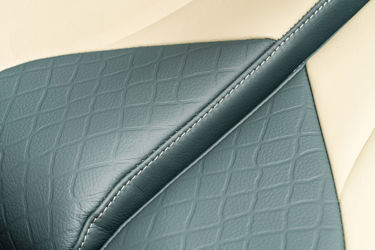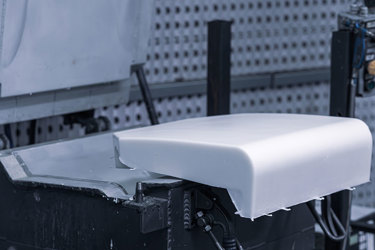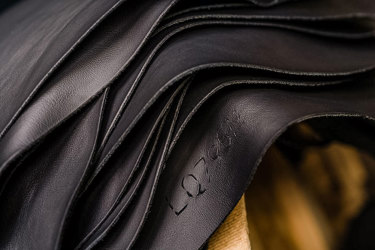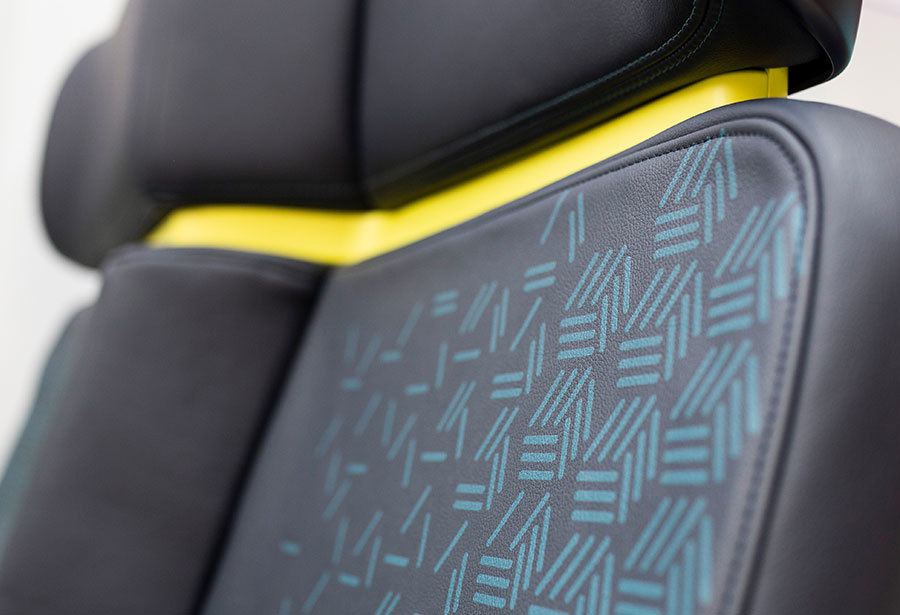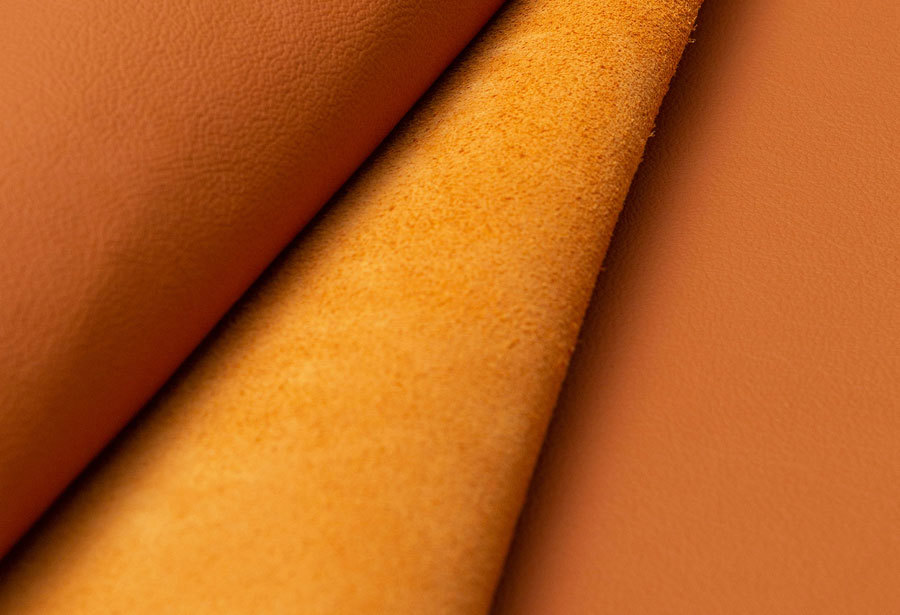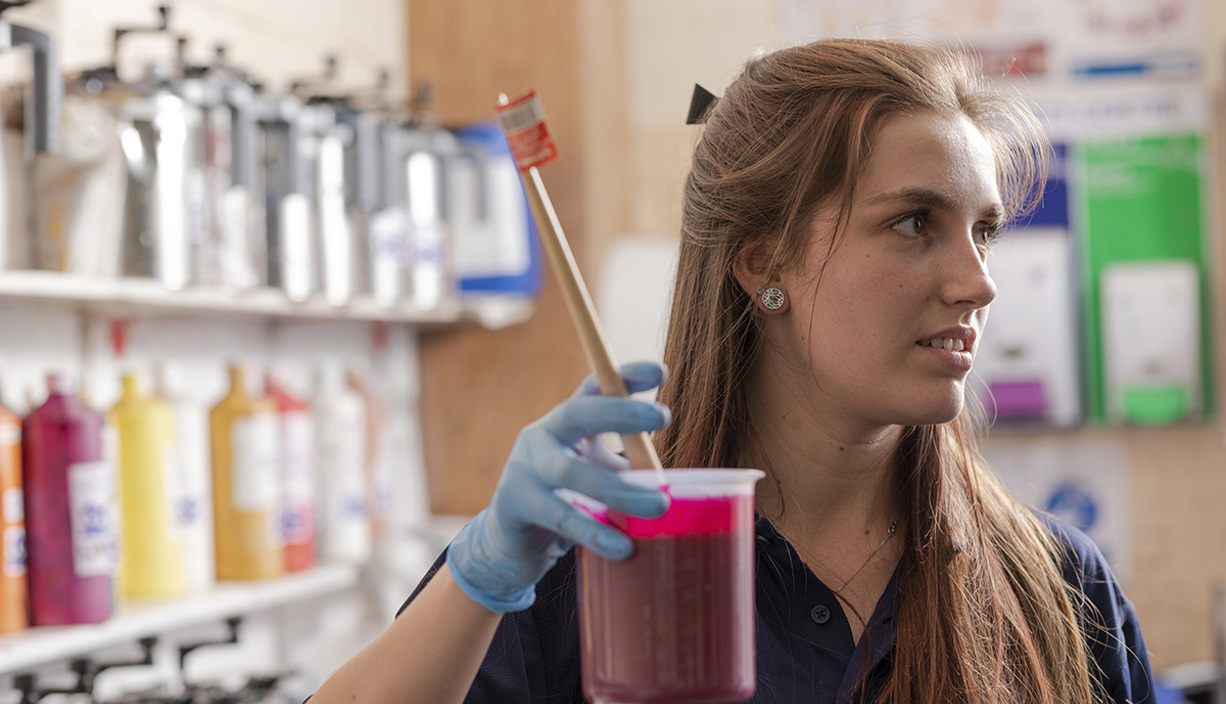
By Alison Salmon, Colour Operations Manager, Scottish Leather Group
As the supplier of leather to the world’s most recognisable aviation and public transport brands, Muirhead knows how vital colour consistency is to dynamic global organisations. That’s why today Muirhead employs a dedicated team of 30 colour technicians and invests in the very latest colour technology to guarantee high quality, accurate and consistent colour in every hide we produce.
Over the years, Muirhead’s colour team has been tasked with finding a colour match for pretty much every item you could ever imagine. From aubergines to pistachio nuts and from cricket balls to handbags, we have matched the colour of many weird and wonderful things to create our high-quality luxury leather that covers everything from first-class airline and rail seats to designer leather sofas. Regardless of what our clients ask us to colour match, our response is always the same - if we can scan it, we can match and recreate it for your luxury and sustainable leather.
Spectrophotometry* adds the science to colour creation
Muirhead’s colour creation process begins in the Colour Development Area, where Irma Valionyte, Muirhead’s Colour Development Lead, uses a combination of spectrophotometry technology linked to specialist Datacolour 800 computer software to accurately scan, analyse, and define the colour in question.
While the optical technology within the Spectrophotometer machine itself is highly complex, the process of measuring and defining colour takes just seconds. With the push of a button, a beam of controlled light is fired at the coloured sample and the Spectrophotometer’s software rapidly analyses the colour by measuring the wavelengths of reflected light. The colour is then expressed as a numerical value that exists within a universally understood language of colour. The L.A.B. colour space (often referred to as CIELAB) is the most popular method for measuring object colour today. The letter ‘L’ indicates lightness, where a value of zero represents the darkest black and a value of 100 represents the brightest white. Letters ‘A’ and ‘B’ are the chromaticity coordinates, with the ‘A’ axis covering red to green, and the ‘B’ axis covering yellow to blue. Every colour known to man (and Muirhead) exists within that scale.
Once these values are determined, the Datacolour 800 software presents us with a range of colour recipes – different combinations of pigments in various ratios required to recreate the colour. From here we can dial up and down the required pigment quantity until we agree with our customers that we have achieved a perfect colour match. I always recommend that customers visit our Centre of Colour Excellence so we can work together on creating their colours. Being in the same room, looking at coloured leather samples together under the same light source, reduces metamerism - the phenomenon where the same colour can look different under different light sources. To counter metamerism when creating colours with remote customers we use the latest lightbox equipment that recreates all light conditions, from bright sunlight to a range of electric and UV light conditions.
Only the best eyes need apply
While today we rely heavily on spectrophotometry and computer science, creating consistent colour remains very much a combination of art and science – the human eye remains an important part of the process. Each member of our colour team must possess superior colour vision. We only appoint people to the colour team if they can pass what is called a Farnsworth Munsell test – a test that very accurately assesses colour vision. The test ensures people can detect the very subtlest differences in colour, shade and hue and we insist that every member of our team passes an annual test to guarantee we have only the best people delivering colour for our customers.
Once we have accurately created the unique recipe for any colour, in terms of the dyes, pigments and chemicals required, it's time to take that recipe to our Colour Kitchen, where the pigment is scaled up and produced to the required batch quantity. The Colour Kitchen is dominated by two very large Italian-made Pirovano dosing machines. Each Pirovano produces up to 60 barrels of colour pigment per day, so, combined, we can produce up to 120 barrels a day on site, ensuring we can deliver large volumes for our global clients.
Again, during the pigment production process, absolutely nothing is left to chance. Our skilled technicians continually test coloured leather samples using the Spectrophotometer to ensure that the pigment being produced by the Pirovano remains within strict tolerances and parameters, as it is scaled up for the final leather production stage. Should the computer monitor show the pigment has strayed more than 1.0 from either the L, A or B axis, then the production team is trained to make the required tweaks to bring the pigment back into tolerance.
On-going quality control throughout the process
Again, colour quality and consistency are meticulously monitored as the pigment is applied to the batch of leather hides on the factory floor. A member of the colour team, a highly trained specialist such as Colour Control Technician Leeanne Wright, will use a spectrophotometer, and her well-trained human eye, to assess every 65th hide coming off the production line. At this stage Leeanne is measuring how consistently the final colour is being applied across the batch of hides and, again, if any measurements from the spectrophotometer are not deemed to be within acceptable tolerance levels, then Leeanne has the power to shut down production immediately. This then allows members of the colour team, who are on-site 24 hours a day, to assess why the colour isn’t behaving as they would expect and to take the necessary action.
Leather is a natural and unique product, and all hides have structural differences - different grains, unique whorls, and folds – so achieving 100% consistent colour across a batch of hides is always a challenge. There are also numerous things that can impact on colour consistency of the final finished leather throughout the process – the structural properties of the pigment being applied, improperly prepared dyes, water quality, washing, pre-treatments and post-dying processes such as drying, embossing, and stretching to reduce grains will all impact on the leather’s finished colour. The key is having a team experienced enough to recognise how to counter these impacts at the beginning of the process in the Colour Development Area when we are creating the original colour recipe. We have people in our team who have spent their entire careers in colour. Our Colour Manager, Bernadette Evans, for instance, has worked in colour since the late 1970s. It’s having that breadth of experience, skill and knowledge across our team that makes Muirhead the industry leader when it comes to consistent colour in leather.
What drives Muirhead’s colour team is the daily challenge of delivering the most ambitious and dynamic colours for the most ambitious and dynamic aviation, travel, and passenger transit brands in the world. Our global trends intelligence report from Stylus identified that public spaces that support both productivity and stillness, socialising and solitary activities will be increasingly sought after and welcomed by modern travellers. The right colour combination can enhance passenger experience and, in a corporate world where colour is an increasingly important marketing tool for global brands, we recognise the importance of getting it right every time and creating colours that last forever.
Discover more about our product design expertise.
* The art or process of measuring the degree of absorption of light at different wavelengths by a chemical substance, by means of a spectrometer or spectrophotometer.
